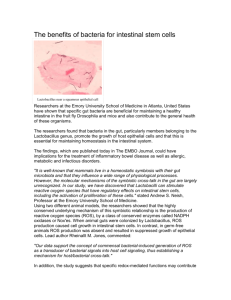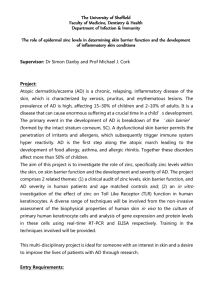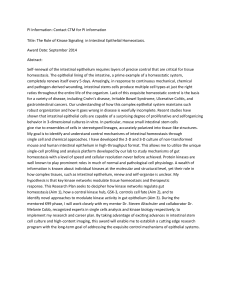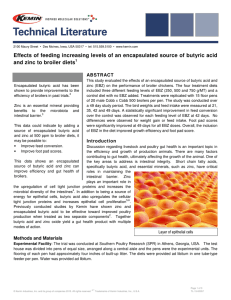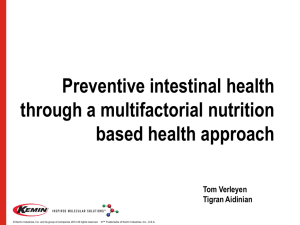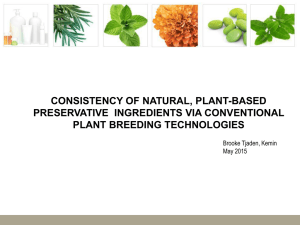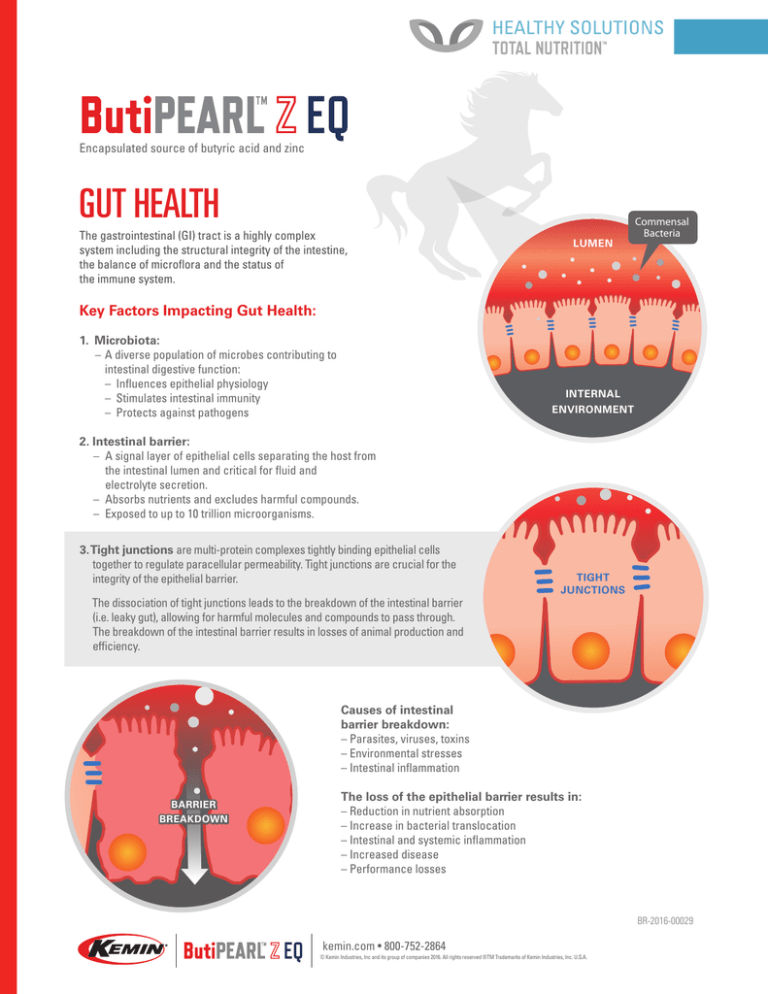
Encapsulated source of butyric acid and zinc
GUT HEALTH
The gastrointestinal (GI) tract is a highly complex
system including the structural integrity of the intestine,
the balance of microflora and the status of
the immune system.
LUMEN
Commensal
Bacteria
Key Factors Impacting Gut Health:
1. Microbiota:
– A diverse population of microbes contributing to
intestinal digestive function:
– Influences epithelial physiology
– Stimulates intestinal immunity
– Protects against pathogens
INTERNAL
ENVIRONMENT
2. Intestinal barrier:
– A signal layer of epithelial cells separating the host from
the intestinal lumen and critical for fluid and
electrolyte secretion.
– Absorbs nutrients and excludes harmful compounds.
– Exposed to up to 10 trillion microorganisms.
3. Tight junctions are multi-protein complexes tightly binding epithelial cells
together to regulate paracellular permeability. Tight junctions are crucial for the
integrity of the epithelial barrier.
The dissociation of tight junctions leads to the breakdown of the intestinal barrier
(i.e. leaky gut), allowing for harmful molecules and compounds to pass through.
The breakdown of the intestinal barrier results in losses of animal production and
efficiency.
TIGHT
JUNCTIONS
Causes of intestinal
barrier breakdown:
– Parasites, viruses, toxins
– Environmental stresses
– Intestinal inflammation
BARRIER
BREAKDOWN
The loss of the epithelial barrier results in:
– Reduction in nutrient absorption
– Increase in bacterial translocation
– Intestinal and systemic inflammation
– Increased disease
– Performance losses
BR-2016-00029
kemin.com • 800-752-2864
© Kemin Industries, Inc and its group of companies 2016. All rights reserved ®TM Trademarks of Kemin Industries, Inc. U.S.A.
ZINC
An essential nutrient with a pivotal role in
many key biological processes affecting
the health and performance of livestock.
– Serves as a structural role in DNA
replication6
– Cofactor for metabolic enzymes7
– Cofactor for wound healing enzymes8
– T-cell development9
– Cofactor for antioxidants10
BUTYRIC ACID
Benefits of Zinc
– Increases microbial diversity in the
intestines11
– Upregulates the expression of tight
junction proteins12
Commensal
Bacteria
Mucin
An integral short-chain fatty acid acting as
an energy source for epithelial cells.
Butyric acid improves gut health through
development of the intestinal epithelium.
Villus
Tight Junction
Proteins
ButiPEARL Z EQ
™
A feed additive combining two powerful
nutrients – butyric acid and zinc oxide – to
improve intestinal health and performance
in livestock.
– A unique encapsulated form of butyric
acid and zinc
– MicroPEARLS® spray freezing technology
– Allows for slow release throughout upper
and lower GI tract
– Superior handling by reducing odor and
dust
Benefits of Butyric Acid:
– Upregulates the expression of tight junction
proteins in the intestines1,2
– Increases antioxidant levels to promote healing
in the GI tract2
– Increases epithelial proliferation3
– Increases host defense peptides4
– Reduces inflammation5
1. Peng L, et al. Butyrate Enhances the Intestinal Barrier by Facilitating Tight Junction Assembly via Activation of AMP-Activated Protein Kinase in Caco-2 Cell Monolayers. 2009. J. Nutr. 139: 1619-1625; 2. Ma X, et al. Butyrate
promotes the recovering of intestinal wound healing through its positive effect on the tight junctions. J Anim Sci. 2012. 90: 266-268; 3. Kotunia A, et al. Effect of sodium butyrate on the small intestine development in neonatal
piglets fed by artificial sow. J Physiol Pharmacol. 2004. 55: 59-68; 4. Guilloteau P, et al. From the gut to the peripheral tissues: the multiple effects of butyrate. 2012. Nutr Res Rev. 23: 366-84; 5. Guilloteau P, et al. From the gut to
the peripheral tissues: the multiple effects of butyrate. 2012 Nutr Res Rev. 23:366–384; 6. Stefanidou M, et al. Zinc: a multipurpose trace element. 2006. Arch Toxicol 80: 1–9; 7. McKall, KA, et al. Function and Mechanism of Zinc
Metalloenzymes. 2000. J. Nutr. 130: 1437S–1446S; 8. Lansdown ABG, et al. Zinc in wound healing: Theoretical, experimental, and clinical aspects. 2007. Wound Rep Reg 15:2–16; 9. Wellinghausen N, et al. The significance of
zinc for leukocyte biology. 1998. J. Leukoc. Biol. 64: 571–577; 10. Sahin K, et al. Role of dietary zinc in heat-stressed poultry: A review. 2009. Poult. Sci. 88: 2176-2183; 11.Katouli M, et al. The effect of zinc oxide supplementation
on the stability of the intestinal flora with special reference to composition of coliforms in weaned pigs. 1999. J of Applied Microbiology. 87:564–573; 12. Zhang B, et al. Zinc prevents Salmonella enterica serovar
Typhimurium-induced loss of intestinal mucosal barrier function in broiler chickens. 2012. Avian Pathology. 41: 361-367.
kemin.com • 800-752-2864
© Kemin Industries, Inc and its group of companies 2016. All rights reserved ®TM Trademarks of Kemin Industries, Inc. U.S.A.

